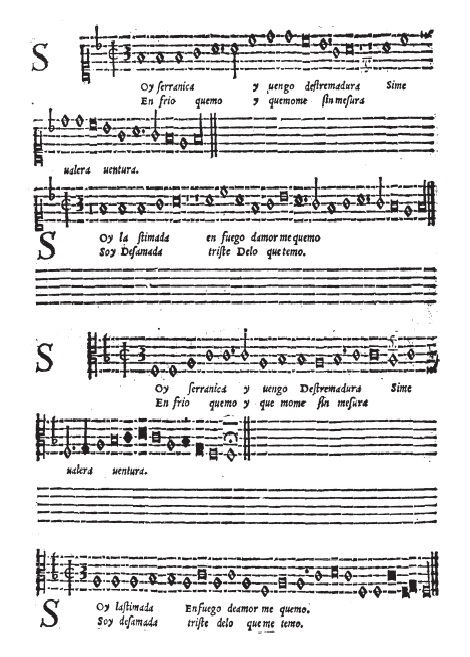Cancionero De Palacio Partituras Pdf Piano

Contents. The manuscript The first ten folios are not numbered; the remaining folios are numbered from 1 to 304. Based on the index of works included in the beginning of the manuscript, it originally had 548 works. Many folios have been lost, reducing the number of works currently in the manuscript to 458.
The manuscript was written by 9 different people and in all received 11 successive additions:. The first addition happened in the first years of the 16th century, most probably after 1505, as a result of the reorganization of the Court's musical chapel ordered by, one year after the death of Queen. This is the most numerous addition and its works are the most representative of the circumspect and expressive style characteristic of the reign of the Catholic Monarchs.
Cancionero de Uppsala (Various). PDF typeset by editor Ulrich Alpers. Cancionero de Uppsala / Cancionero del Duque de Calabria / Cancionero de Venecia. 112 rows The Cancionero de Palacio (Madrid, Biblioteca Real, MS II - 1335), or Cancionero Musical de Palacio (CMP), also known as Cancionero de.
The next four additions were supposedly made between 1505 and 1510. The next two were made around 1515. The 8th addition was possibly made in 1516, right after the death of Ferdinand II. The 9th happened between 1516 and 1517.

The 10th addition, from folios 293 to 304, consisted of a tiny cancionero written in a different kind of paper which was incorporated to the body of the main manuscript. The works contained in it are not listed in the original opening index, and two of its works were already present in the Cancionero. It possibly originated in the chapel of, in.
Al Alba Venid
The last addition was made between 1519–1520, when the chapel of the Catholic Monarchs had already moved to other location. By the end of the 19th century the manuscript was found in the Royal Library of the by composer and musicologist, who transcribed and published it in 1890 with the title 'Cancionero musical de los siglos XV y XVI' (Musical songbook of the 15th and 16th centuries).
Works The manuscript contains 458 works, the bulk of which are in, although a few works also appear in, French, and. It constitutes an anthology of the polyphonic music performed during the reign of the Catholic Monarchs. The themes found in the songs are the most varied: romantic, religious, festive, chivalrous, satirical, pastoral, burlesque, political, historical, etc. Accompanied by music of all styles: from popular folk songs to elaborate compositions.
The musical form most important is the, though other genres are also found as the and the. The majority of the works are for one voice with instrumental accompaniment but polyphonic works are also available for 2, 3 or 4 voices. Below is a list of the composers present in the manuscript, with the number of works in parentheses. Download story of a girl zarr pdf free.
See All 112 Rows On Www.cpdl.org

Juan Del Encina
Work Title Cancionero Musical de Palacio Alt ernative. Title Cancionero de Palacio; Cancionero de Barbieri; Chansonnier Composer Opus/Catalogue Number Op./Cat. E-Mp MS 1335 I-Catalogue Number I-Cat. None force assignment Movements/Sections Mov'ts/Sec's 469 works.
Year/Date of Composition Y/D of Comp. First Pub lication. 1890 Piece Style External Links Misc. Comments. First discovered at the end of the XIX century at Biblioteca del Palacio Real de Madrid by composer and musicologist Francisco Asenjo Barbieri, the Cancionero was fully transcripted by the same discoverer in 1890 with the name 'Cancionero musical de los siglos XV y XVI'.